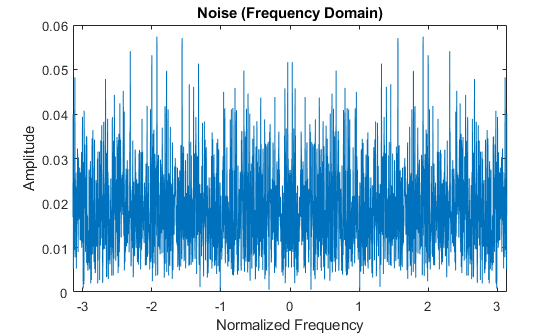EEE 6209
Advanced Signal Processing Coursework 2018-19: EEE6209-001 Dr Charith Abhayaratne
01/03/2019
Total Marks: 100 (This contributes to 25% of the overall module marks) TITLE: Signal Noise removal
Due Date: 1st May 2019 at 16.00 via MOLE Turnitin

The aim of the coursework exercise is to explore and apply transform domain processing for signal denoising. Each of you has been assigned an individual signal. The number of the signal allocated to you can be found in “My Grades” section in MOLE EEE6209 pages. Download the “signals” file from MOLE coursework folder and choose the MAT file (x.mat, where x is your signal number). Also download the noise file (noise.MAT) from MOLE coursework folder. Two variables can be found in the signal MAT file. They are the signal assigned to you and the signal number, n. The noise MAT file contains the noise signal (V) to corrupt the signal assigned to you.
Add noise, V, to your test signal, A, to get the corrupted image, B, as follows:
B= A+ V.
You have to complete 3 tasks:
1. Analyse the original signal A, to understand its time-domain and frequency domain characteristics.
2. Use the Fourier transform-based techniques to remove the noise in signal, B, to recover the original
signal, A.
3. Explore the multi resolution analysis based on the Discrete Cosine Transform (DCT) you learned in
lectures (Topic 02) to remove noise in signal, B, to recover the original signal, A.
You are required to submit a short report (not more than 2000 words in text and not exceeding 6 –A4 pages)
including your findings in above 3 tasks.
For each task you should include the following in your report:
Task 1
Signal analysis task – The number assigned to your signal; Display the plots of original and noisy signals; Frequency domain characteristics of the signal (Hint: Using FFT); Time domain characteristics of the signal (Hint: edge detection using moving difference filter); Identification of signal segments; computation of Peak Signal to noise ratio (PSNR) for the noisy signal and its segments; suggestion for noise removal strategies.
Task 2
Fourier domain noise removal – In this case, you have to assume the noise is spread in all frequencies. You may want to verify this in your report. Noise magnitude in frequency domain may be smaller than that of the useful signal components. With this assumption, you can implement a method to remove noise in the Fourier domain.
For this task you may want to consider the signal segments as in Task 1 as opposed to the overall signal. In your report, explain how you use the Fourier Transform to remove the noise in signal, B, to recover the original signal, A; Plot the recovered signal; If your technique uses any parameter values, for example, threshold values, you need to show the result for several different values of the parameter; Compute the PSNR values for the recovered signal segments for different parameter values; and discuss the performance of the Fourier transform –based noise removal algorithm and the choice of its parameter values.
Task3
Use the 1D N-point DCT on the signal segments to remove the noise, where N can be any integer number. In your report, explain how you use the DCT remove the noise from the signal segments. Explain
how the thresholds are chosen. Include block diagrams of the noise removal algorithm; Plot the recovered signal; If your technique uses any parameter values, for example different values of N or thresholds, you need to show the result for several different values of the parameters; Compute the PSNR values for the recovered signal segments for different parameter values; Discuss the performance of the DCT –based noise removal algorithm and the choice of its parameter values.
Finally provide an overall comparison and discussion on the performance of Fourier –based denoising and DCT denoising.
The marking scheme is as follows:
Textual part:
Task 1 Methodology, results, analysis and discussion 25 marks Task 2 Methodology 15 marks
Task 2 Results, analysis and discussion 15 marks
Task 3 Methodology 15 marks
Task 3 Results, analysis and discussion 15 marks
Overall Conclusions and recommendations 15 marks
Figures part:
Accuracy of Task 1 figures 25 marks
Accuracy of Task 2 figures 25 marks
Accuracy of Task 3 figures 25 marks
Quality of figures 25 marks
Overall marks = 0.7x(Textual part marks) + 0.3x(Figures part marks)
USEFUL ADVICE
- DO NOT provide Matlab codes with your report. Instead use pseudo codes to explain your methodology and
- DONOT copy and paste any text from this Doing so will result in a matching in Turnitin reports leading to dedeuction of marks by the department’s plagiarism assessment committee.
- Allyour numerical answers should include the appropriate units (For example, PSNR values in dB). All the plots should include x-axis label, y-axis label, plot title and a legend if you are showing multiple plots in the same figure. Not following these instructions may result in penalty
GOOD LUCK!
点击查看 关于“信号处理代写 EEE 6209 Advanced Signal Processing的reporth 和 solution”
